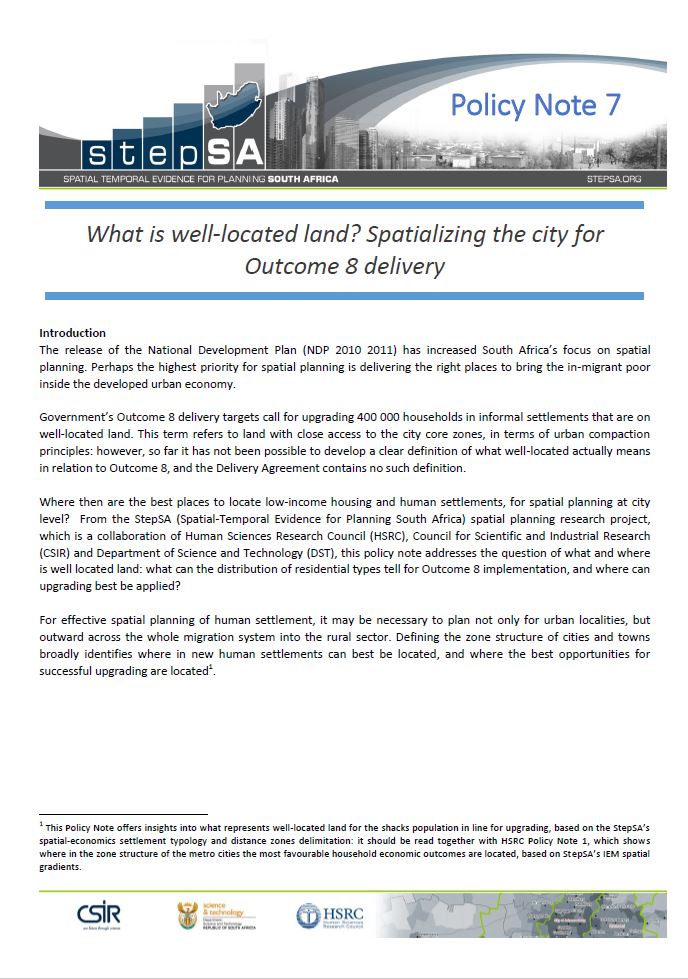What is well-located land? Spatializing the city for Outcome 8 delivery
Policy Note

01 January 2015
Spatial Temporal Evidence for Planning South Africa
English
Policy brief
Spatial Temporal Evidence for Planning South Africa (stepSA)
Africa
The release of the National Development Plan (NDP) increased South Africa’s focus on spatial planning. Perhaps the highest priority for spatial planning is delivering the right places to bring the in-migrant poor inside the developed urban economy.
Government’s Outcome 8 delivery targets call for upgrading 400 000 households in informal settlements that are on well-located land. This term refers to land with close access to the city core zones, in terms of urban compaction What is well-located land? Spatializing the city for Outcome 8 delivery principles: however, so far it has not been possible to develop a clear definition of what well-located actually means in relation to Outcome 8, and the Delivery Agreement contains no such definition.
Where then are the best places to locate low-income housing and human settlements, for spatial planning at city level? From the StepSA (Spatial-Temporal Evidence for Planning South Africa) spatial planning research project, which is a collaboration of Human Sciences Research Council, Council for Scientific and Industrial Research and Department of Science and Innovation, this policy note addresses the question of what and where is well located land: what can the distribution of residential types tell for Outcome 8 implementation, and where can upgrading best be applied?
For effective spatial planning of human settlement, it may be necessary to plan not only for urban localities, but outward across the whole migration system into the rural sector. Defining the zone structure of cities and towns broadly identifies where in new human settlements can best be located, and where the best opportunities for successful upgrading are located.
Abstract based directly on source.



Comments